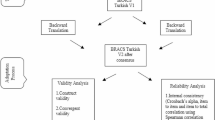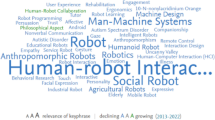Abstract
Purpose
The expanding capabilities of surgical systems bring with them increasing complexity in the interfaces that humans use to control them. Robotic C-arm X-ray imaging systems, for instance, often require manipulation of independent axes via joysticks, while higher-level control options hide inside device-specific menus. The complexity of these interfaces hinder “ready-to-hand” use of high-level functions. Natural language offers a flexible, familiar interface for surgeons to express their desired outcome rather than remembering the steps necessary to achieve it, enabling direct access to task-aware, patient-specific C-arm functionality.
Methods
We present an English language voice interface for controlling a robotic X-ray imaging system with task-aware functions for pelvic trauma surgery. Our fully integrated system uses a large language model (LLM) to convert natural spoken commands into machine-readable instructions, enabling low-level commands like “Tilt back a bit,” to increase the angular tilt or patient-specific directions like, “Go to the obturator oblique view of the right ramus,” based on automated image analysis.
Results
We evaluate our system with 212 prompts provided by an attending physician, in which the system performed satisfactory actions 97% of the time. To test the fully integrated system, we conduct a real-time study in which an attending physician placed orthopedic hardware along desired trajectories through an anthropomorphic phantom, interacting solely with an X-ray system via voice.
Conclusion
Voice interfaces offer a convenient, flexible way for surgeons to manipulate C-arms based on desired outcomes rather than device-specific processes. As LLMs grow increasingly capable, so too will their applications in supporting higher-level interactions with surgical assistance systems.



Similar content being viewed by others
References
Killeen BD, Gao C, Oguine KJ, Darcy S, Armand M, Taylor RH, Osgood G, Unberath M (2023) An autonomous X-ray image acquisition and interpretation system for assisting percutaneous pelvic fracture fixation. Int J CARS 18(7):1201–1208. https://doi.org/10.1007/s11548-023-02941-y
Kausch L, Thomas S, Kunze H, Privalov M, Vetter S, Franke J, Mahnken AH, Maier-Hein L, Maier-Hein K (2020) Toward automatic C-arm positioning for standard projections in orthopedic surgery. Int J CARS 15(7):1095–1105. https://doi.org/10.1007/s11548-020-02204-0
Hendrix G (1982) Natural-language interface. Am J Comput Linguist 8(2):56–61
Zhang C, Chen J, Li J, Peng Y, Mao Z (2023) Large language models for human–robot interaction: a review. Biomim Intell Robot 3(4):100131. https://doi.org/10.1016/j.birob.2023.100131
Ye Y, You H, Du J (2023) Improved trust in human–robot collaboration with ChatGPT. IEEE Access 11:55748–55754. https://doi.org/10.1109/ACCESS.2023.3282111
Driess D, Xia F, Sajjadi M.S.M, Lynch C, Chowdhery A, Ichter B, Wahid A, Tompson J, Vuong Q, Yu T, Huang W, Chebotar Y, Sermanet P, Duckworth D, Levine S, Vanhoucke V, Hausman K, Toussaint M, Greff K, Zeng A, Mordatch I, Florence P (2023) PaLM-E: an embodied multimodal language model. arXiv. https://doi.org/10.48550/arXiv.2303.03378arXiv:2303.03378
Brown T.B, Mann B, Ryder N, Subbiah M, Kaplan J, Dhariwal P, Neelakantan A, Shyam P, Sastry, G, Askell A, Agarwal S, Herbert-Voss A, Krueger G, Henighan T, Child R, Ramesh A, Ziegler D.M, Wu J, Winter C, Hesse C, Chen M, Sigler E, Litwin M, Gray S, Chess B, Clark J, Berner C, McCandlish S, Radford A, Sutskever I, Amodei D (2020) Language models are few-shot learners. arXiv https://doi.org/10.48550/arXiv.2005.14165arXiv:2005.14165
Radford A, Kim JW, Xu T, Brockman, G, McLeavey C, Sutskever I (2022) Robust speech recognition via large-scale weak supervision. arXiv (2022). https://doi.org/10.48550/arXiv.2212.04356arXiv:2212.04356
OpenAI:GPT-4 Technical Report. arXiv (2023). https://doi.org/10.48550/arXiv.2303.08774arXiv:2303.08774
Shridhar M, Manuelli L, Fox D (2021) CLIPort: what and where pathways for robotic manipulation. arXiv. https://doi.org/10.48550/arXiv.2109.12098arXiv:2109.12098
Hundt A, Killeen B, Greene N, Wu H, Kwon H, Paxton C, Hager GD (2020) “Good Robot!’’: efficient reinforcement learning for multi-step visual tasks with sim to real transfer. IEEE Robot Autom Lett 5(4):6724–6731. https://doi.org/10.1109/LRA.2020.3015448
Hundt A, Murali, A, Hubli P, Liu R, Gopalan N, Gombolay M, Hager GD (2022) Good robot! Now watch this!": repurposing reinforcement learning for task-to-task transfer. In: Conference on robot learning. PMLR, pp 1564–1574. https://proceedings.mlr.press/v164/hundt22a.html
Tellex S, Gopalan N, Kress-Gazit H, Matuszek C (2020) Robots that use language. Annu Rev Control Robot Autonom Syst 3(1):25–55. https://doi.org/10.1146/annurev-control-101119-071628
Lynch C, Wahid A, Tompson J, Ding T, Betker J, Baruch R, Armstrong T, Florence P (2023) Interactive language: talking to robots in real time. IEEE Robot Autom Lett 66:1–8. https://doi.org/10.1109/LRA.2023.3295255
Hazlehurst B, Sittig DF, Stevens VJ, Smith KS, Hollis JF, Vogt TM, Winickoff JP, Glasgow R, Palen TE, Rigotti NA (2005) Natural language processing in the electronic medical record: assessing clinician adherence to tobacco treatment guidelines. Am J Prev Med 29(5):434–439. https://doi.org/10.1016/j.amepre.2005.08.007
Huang H, Zheng O, Wang D, Yin J, Wang Z, Ding S, Yin H, Xu C, Yang R, Zheng Q, Shi B (2023) ChatGPT for shaping the future of dentistry: the potential of multi-modal large language model. Int J Oral Sci 15(29):1–13. https://doi.org/10.1038/s41368-023-00239-y
Thirunavukarasu AJ, Ting DSJ, Elangovan K, Gutierrez L, Tan TF, Ting DSW (2023) Large language models in medicine. Nat Med 29(8):1930–1940. https://doi.org/10.1038/s41591-023-02448-8
Meskó B, Topol EJ (2023) The imperative for regulatory oversight of large language models (orgenerative AI) in healthcare. npj Digit Med 6(120):1–6. https://doi.org/10.1038/s41746-023-00873-0
Killeen BD, Cho SM, Armand M, Taylor RH, Unberath M (2023) In silico simulation: a key enabling technology for next-generation intelligent surgical systems. Prog Biomed Eng 5(3):032001. https://doi.org/10.1088/2516-1091/acd28b
Bier B, Unberath M, Zaech J-N, Fotouhi J, Armand M, Osgood G, Navab N, Maier A (2018) X-ray-transform invariant anatomical landmark detection for pelvic trauma surgery. In: Medical image computing and computer assisted intervention—MICCAI 2018. Springer, Cham, Switzerland, pp 55–63. https://doi.org/10.1007/978-3-030-00937-3_7
Liu W, Wang Y, Jiang T, Chi Y, Zhang L, Hua X-S (2020) Landmarks detection with anatomical constraints for total hip arthroplasty preoperative measurements. In: Medical image computing and computer assisted intervention—MICCAI 2020. Springer,Cham, Switzerland, pp 670–679. https://doi.org/10.1007/978-3-030-59719-1_65
Gao C, Killeen BD, Hu Y, Grupp RB, Taylor RH, Armand M, Unberath M (2023) Synthetic data accelerates the development of generalizable learning-based algorithms for X-ray image analysis. Nat Mach Intell 5(3):294–308. https://doi.org/10.1038/s42256-023-00629-1
Kügler D, Sehring J, Stefanov A, Stenin I, Kristin J, Klenzner T, Schipper J, Mukhopadhyay A (2020) i3PosNet: instrument pose estimation from X-ray in temporal bone surgery. Int J CARS 15(7):1137–1145. https://doi.org/10.1007/s11548-020-02157-4
Killeen BD, Chakraborty S, Osgood G , Unberath M (2022) Toward perception-based anticipation of cortical breach during K-wire fixation of the pelvis. In: Proceedings Volume 12031, medical imaging 2022: physics of medical imaging. SPIE, pp 410–415. https://doi.org/10.1117/12.2612989
Killeen BD, Zhang H, Mangulabnan J, Armand M, Taylor RH, Osgood G, Unberath M (2023) Pelphix: surgical phase recognition from X-ray images in percutaneous pelvic fixation. arXiv. https://doi.org/10.48550/arXiv.2304.09285arXiv:2304.09285
Arbogast N, Kurzendorfer T, Breininger K, Mountney P, Toth D, Narayan SA, Maier A (2019) Workflow phase detection in fluoroscopic images using convolutional neural networks. In: Bildverarbeitung Fr die Medizin 2019. Springer, Wiesbaden, Germany, pp 191–196. https://doi.org/10.1007/978-3-658-25326-4_41
Kausch L, Thomas S, Kunze H, Norajitra T, Klein A, El Barbari JS, Privalov M, Vetter S, Mahnken A, Maier-Hein L, Maier-Hein KH (2021) C-arm positioning for spinal standard projections in different intra-operative settings. In: Medical image computing and computer assisted intervention—MICCAI 2021. Springer, Cham, Switzerland, pp 352–362. https://doi.org/10.1007/978-3-030-87202-1_34
Grupp RB, Unberath M, Gao C, Hegeman RA, Murphy RJ, Alexander CP, Otake Y, McArthur BA, Armand M, Taylor RH (2020) Automatic annotation of hip anatomy in fluoroscopy for robust and efficient 2D/3D registration. Int J Comput Assist Radiol Surg 15(5):759–769. https://doi.org/10.1007/s11548-020-02162-7. arXiv:3233.3361
Seshamani S, Chintalapani G, Taylor R (2011) Iterative refinement of point correspondences for 3D statistical shape models. In: Medical image computing and computer-assisted intervention—MICCAI 2011. Springer, Berlin, Germany, pp 417–425. https://doi.org/10.1007/978-3-642-23629-7_51
Cámbara G, López F, Bonet D, Gómez P, Segura C, Farrús M, Luque J (2022) TASE: task-aware speech enhancement for wake-up word detection in voice assistants. Appl Sci 12(4):1974. https://doi.org/10.3390/app12041974
Bender EM, Gebru, T, McMillan-Major A, Shmitchell S (2021) On the dangers of stochastic parrots: Can language models be too big? xn–st9h. In: FAccT’21: proceedings of the 2021 ACM conference on fairness, accountability, and transparency. Association for Computing Machinery, New York, NY, USA, pp 610–623. https://doi.org/10.1145/3442188.3445922
Mialon G, Dessì R, Lomeli M, Nalmpantis C, Pasunuru R, Raileanu R, Rozière B, Schick T, Dwivedi-Yu J, Celikyilmaz A, Grave E, LeCun Y, Scialom T (2023) Augmented language models: a survey. arXiv. https://doi.org/10.48550/arXiv.2302.07842. arXiv:2302.07842
Semnani S, Yao V, Zhang H, Lam M (2023) WikiChat: stopping the hallucination of large language model chatbots by few-shot grounding on Wikipedia. ACL Anthol. https://doi.org/10.18653/v1/2023.findings-emnlp.157
Sloos M, Ariza García A, Andersson A, Neijmeijer M (2019) Accent-induced bias in linguistic transcriptions. Lang Sci 76:101176. https://doi.org/10.1016/j.langsci.2018.06.002
Huang L, Yu W, Ma W, Zhong W, Feng Z, Wang H, Chen Q, Peng W, Feng X, Qin B, Liu T (2023) A survey on hallucination in large language models: principles,taxonomy, challenges, and open questions. arXiv. https://doi.org/10.48550/arXiv.2311.05232arXiv:2311.05232
Chen M, Nikolaidis S, Soh H, Hsu D, Srinivasa S (2020) Trust-aware decision making for human–robot collaboration: model learning and planning. J Hum–Robot Interact 9(2):1–23. https://doi.org/10.1145/3359616
Cuadra A, Li S, Lee H, Cho, J, Ju W (2021) My bad! Repairing intelligent voice assistant errors improves interaction. Proc ACM Hum–Comput Interact 5(CSCW1):1–24. https://doi.org/10.1145/3449101
Funding
This work was supported by the Link Foundation Fellowship for Modeling, Training, and Simulation; the NIH under Grant No. R21EB028505, the NSF under Award No. 2239077, and Johns Hopkins University Internal Funds.
Author information
Authors and Affiliations
Corresponding author
Ethics declarations
Conflict of interest
The authors declare that they have no conflict of interest.
Ethical approval
This article does not contain any studies with human participants performed by any of the authors.
Informed consent
This article does not contain patient data collected by any of the authors.
Additional information
Publisher's Note
Springer Nature remains neutral with regard to jurisdictional claims in published maps and institutional affiliations.
Appendix: Full instructions
Appendix: Full instructions
The following instructions are provided to the LLM in every interaction.

Each interaction also includes a set of 35 example episodes, such as:

Rights and permissions
Springer Nature or its licensor (e.g. a society or other partner) holds exclusive rights to this article under a publishing agreement with the author(s) or other rightsholder(s); author self-archiving of the accepted manuscript version of this article is solely governed by the terms of such publishing agreement and applicable law.
About this article
Cite this article
Killeen, B.D., Chaudhary, S., Osgood, G. et al. Take a shot! Natural language control of intelligent robotic X-ray systems in surgery. Int J CARS (2024). https://doi.org/10.1007/s11548-024-03120-3
Received:
Accepted:
Published:
DOI: https://doi.org/10.1007/s11548-024-03120-3




